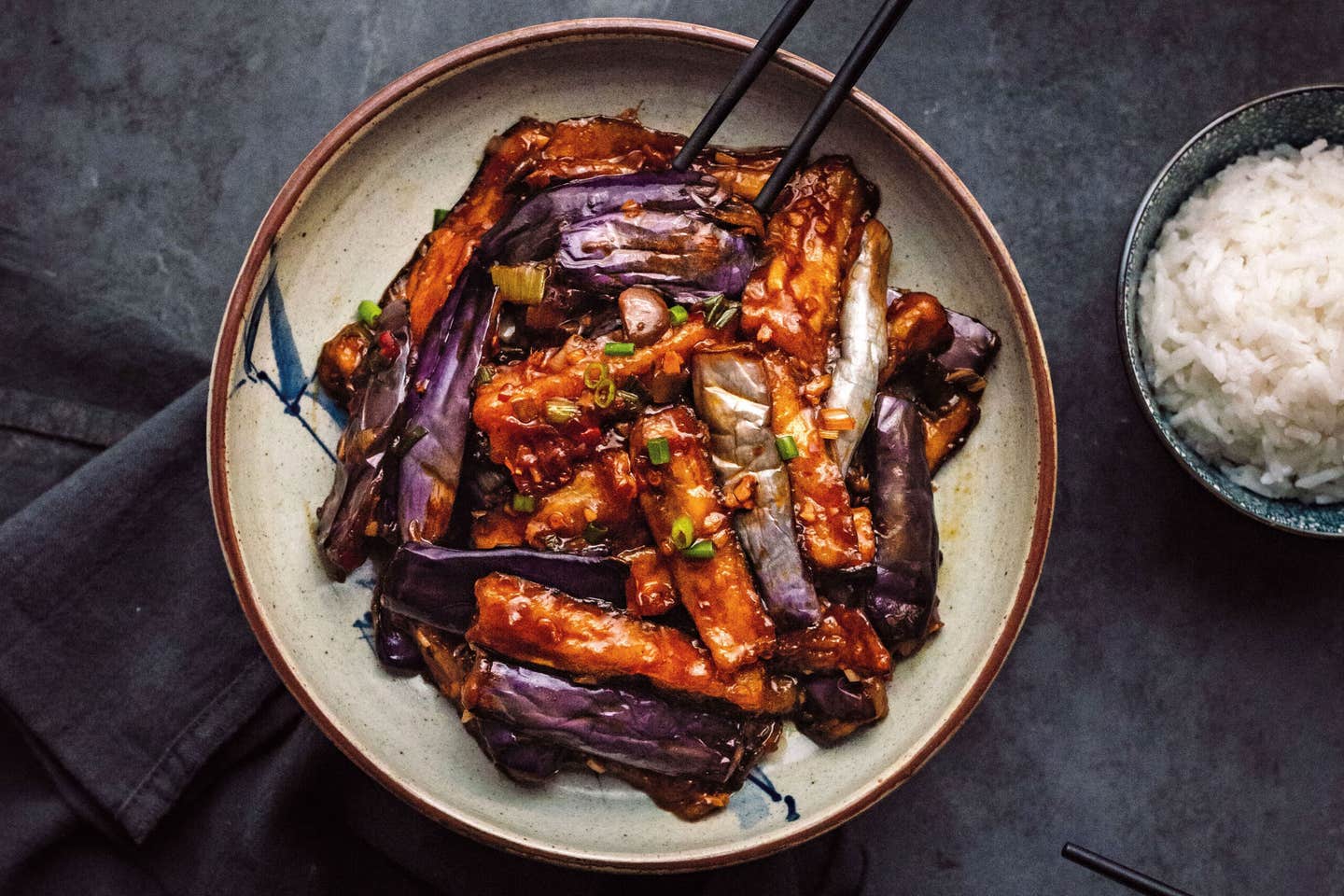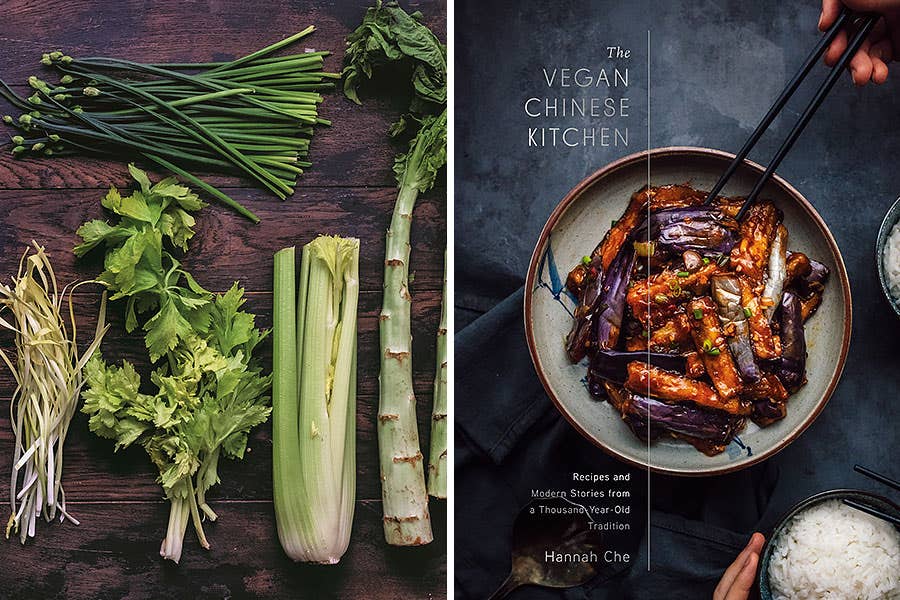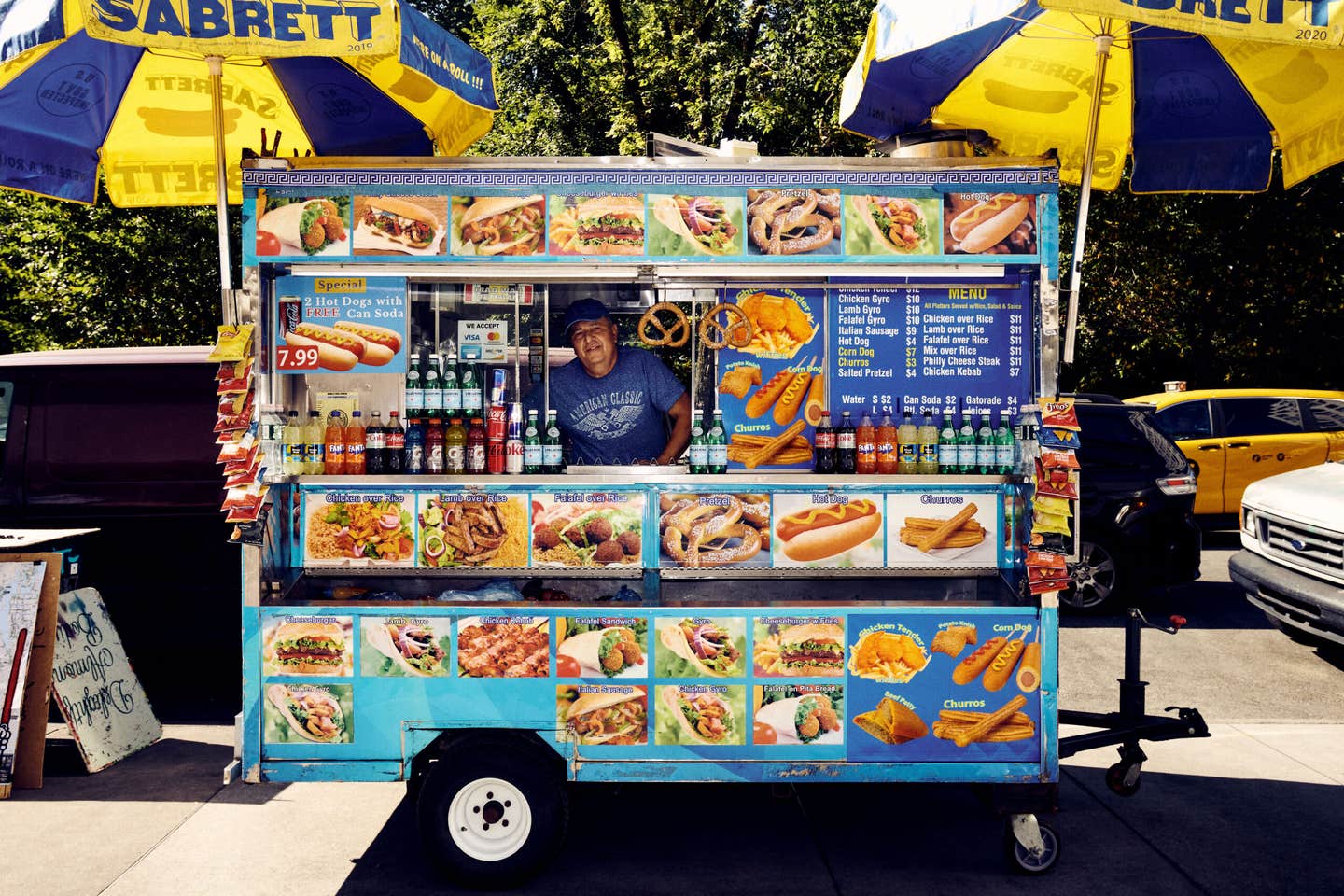
Chinese Vegan Cooking Has Been Perfected Over Millenia (And You Can Taste It)
Cookbook author Hannah Che returned from China with a newfound passion for the country’s plant-based traditions. Now, she’s sharing them with the world.
This story is brought to you by SAVEUR Cookbook Club, our passionate community of food-loving readers from around the globe celebrating our favorite authors and recipes. Join us as we cook through a new book every two months, and share your food pics and vids on social media with the hashtags #SAVEURCookbookClub and #EatTheWorld.
“Ai-ya, I didn’t think my daughter would become one of those hippie types,” I overheard my mother say to a friend over the phone. I had decided to go vegan my junior year of college, and determined to learn to cook for myself, I looked up meal plans and recipes on Pinterest, followed popular bloggers, bought cookbooks, and stocked my pantry with lentils and chickpea pasta. I packed overnight oats to school and invited friends over to my tiny Houston apartment to make vegan pizza and grain bowls on weekends. I even started a recipe blog, posting photos on Instagram of the meals I made.
But it was different back at home, sitting at our scratched walnut table as my mom busied about the kitchen, preparing food for the holidays. My parents cooked mostly Chinese meals—a spread of shared dishes to go with rice—and they couldn’t understand why I would forgo a special dish of expensive seafood, or a stir-fry that had ground meat or a few pork slivers. “Just pick around and eat the vegetables, at least you still get the flavor from the meat,” my mom offered.
Over the winter break, I was determined to convert my family to a plant-based diet. I talked about the horrors of factory farming and the environmental footprint of meat and dairy. I pulled out my arsenal of recipes: Thai curries, walnut-meat tacos, creamy cashew pastas, and quinoa burgers. My siblings liked them well enough, but my dad gingerly bit into one patty and refused to eat the rest. “I’m cooking duck for dinner,” he announced. For Lunar New Year, our family gathered to make pork dumplings, as we did every holiday. It was my favorite tradition, and I usually helped make the filling, but this time, my dad looked up as he kneaded dough and saw me watching from the side.

“Rongrong, you aren’t participating?” he asked. It hadn’t occurred to me until then that my decision to go vegan wasn’t just about food or even a personal choice. My parents were immigrants; food was the way they taught us about our roots; certain dishes were central not just to my family’s memories, but also connected us to a lifetime of people and occasions and places and times that went before and beyond me. I wondered if my commitment to eat more sustainably meant I was turning away from my culture. Talking to my peers, I realized I wasn’t alone in these fears. It’s impossible to separate who we are from what we eat, and animal products are deeply ingrained in the food traditions of most cultures. How do you remove yourself from these traditions without a fundamental sense of loss?
But as I tried re-creating my favorite childhood dishes, I began to realize how much of Chinese food was inherently plant-based. And I learned that vegetarian and vegan cooking is its own cuisine in China, a rich tradition that had existed for more than 2,000 years, motivated by the Buddhist tenets of compassionate eating. On my trip to visit relatives in China one summer, I ate at temple restaurants, plant-based lunch canteens, and buffets, astonished by the flavor and ingenuity of dishes like clay pot tofu skin and delicate layered soups made with mung beans and shiitake mushrooms. This cuisine was beautiful, alluringly delicious, and rich in history—I wanted to learn more.
So, just a few months after I finished graduate school, I packed my bags and moved to China to go to culinary school. For the past few years, my journey to learn Chinese vegetarian cooking has taken me back to my parents’ hometown in Harbin, to Shanghai, to Chengdu, to Suzhou, and to Guangzhou, where I trained as a chef at the only professional vegetarian cooking program in the country. It’s taken me to Taiwan, where I lived for a year, cooking and eating and learning from the vibrant Buddhist community who have preserved a microcosm of regional Chinese vegetarian traditions and developed new ones of their own. I’ve talked to old artisans who have been making tofu and soy milk skin for their entire lives, and have called up my parents to ask about our own family’s history, learning stories I was never interested in hearing before. Over the years, my dad has decided to cut most of the meat out of his diet for health reasons, and he’s always asking when I’m coming home so he can eat the food I cook. And unsurprisingly, my knowledge of Chinese culture has deepened. Becoming vegan didn’t alienate me from my heritage, as I’d feared, but actually motivated me to understand it even more.

In Chinese, 素 su translates literally to “vegan” or “vegetarian,” and you’ll see it on menus indicating dishes free of meat. But su also means simple, quiet and plainly unadorned, the elemental nature or essence of something larger. I began this book thinking I’d write about vegan recipes, but along the way I realized that this kind of cooking was actually at the heart of Chinese cuisine: the inventive transformation of frugal ingredients like vegetables, tofu, and grains into a breathtaking variety of simple and delicious dishes. China has eight major regional cuisines, each influenced by wildly different climates, agriculture, geography, and history, and each of the country’s twenty-three provinces has its own local vegetarian traditions and dishes. It’s impossible to cover them all, so instead I’ve drawn from my own experiences—this is a subjective compilation of my favorites.
Reprinted with permission from The Vegan Chinese Kitchen by Hannah Che © 2022. Photographs by Hannah Che. Published by Clarkson Potter, a division of Penguin Random House, LLC.
Keep Reading
Continue to Next Story










